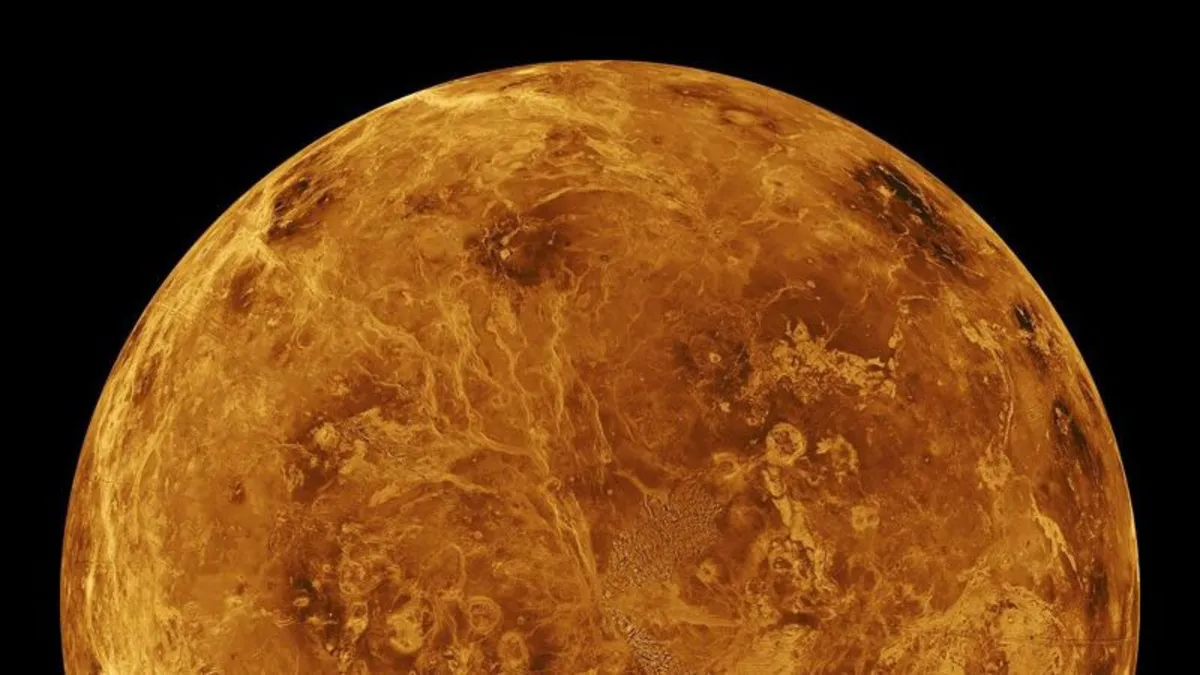
Sign up for CNN’s Wonder Theory science newsletter to explore the universe with updates on remarkable discoveries, scientific advancements, and more. In an intriguing turn of events, a Soviet-era spacecraft designed for a soft landing on Venus is set to fall from the sky on Friday night or early Saturday, as per the latest estimates from experts in space science.
The object in question, known as Cosmos 482 or Kosmos 482, is believed to be a capsule launched by the Soviet Union in March 1972. Initially intended to study the environment of Venus, the spacecraft failed during its journey to a transfer orbit that would have taken it to the planet. Since then, Cosmos 482 has been aimlessly orbiting Earth for decades, gradually being pulled back toward our planet due to atmospheric drag, even at altitudes of hundreds of miles.
As of now, Cosmos 482 is on track to crash back to Earth between 10 p.m. and 6:30 a.m. ET, according to analyses from multiple institutions, including the European Space Agency and the federally funded US research group, Aerospace Corporation. Experts have been closely monitoring the spacecraft's orbital path, which has been steadily decreasing in altitude, confirming predictions made earlier this week by space traffic experts. As the reentry event approaches, the estimated time frame for the final descent will be refined.
Fortunately, Cosmos 482 is unlikely to pose a significant risk to people on the ground. Marlon Sorge, a space debris expert with The Aerospace Corporation, stated that the spacecraft was designed to survive reentry into Venus's atmosphere. This means there is a fair chance that the spacecraft could return to Earth intact, reducing risks associated with debris scattering upon reentry.
Typically, when space debris, such as defunct rocket parts, reenters Earth’s atmosphere, they are often destroyed by the intense forces of reentry, especially when traveling at speeds exceeding 17,000 miles per hour (27,000 kilometers per hour). However, Cosmos 482 is uniquely equipped for reentry with a substantial heat shield designed to protect it from the extreme temperatures and pressures experienced during descent. Given its original design for a soft landing on Venus, the spacecraft is likely to reach the surface intact.
The Soviet Union's Venera program was a pioneering initiative aimed at exploring Venus during the 20th-century space race. Throughout the 1970s and 1980s, a series of Venera probes were launched, successfully transmitting valuable data back to Earth. However, of the two Venera vehicles launched in 1972, only one reached Venus, while the other, believed to be Cosmos 482, became stranded in Earth's orbit.
While it is highly unlikely that Cosmos 482 will land on dry land, it could potentially crash anywhere within a broad area that includes parts of Africa, South America, Australia, the USA, Canada, Europe, and Asia. Marco Langbroek, a space traffic expert from Delft Technical University, advises that if Cosmos 482 does land on solid ground, onlookers should maintain a safe distance. The aged spacecraft could leak hazardous fuels or pose other risks to public safety. “Contact the authorities,” Sorge emphasized. “Please don’t mess with it.”
Legally, Cosmos 482 belongs to Russia. According to the 1967 Outer Space Treaty, the nation that launches an object into space retains ownership and responsibility for that object, regardless of whether it crashes back to Earth decades later.
As defunct objects in space regularly fall out of orbit, many disintegrate entirely during reentry. However, with the rise of commercial space activities, including companies like SpaceX launching hundreds of new satellites each year, concerns about space traffic have intensified. Experts are working diligently to ensure that objects do not collide in space or pose risks when they reenter Earth’s atmosphere uncontrollably. Parker Wishik from The Aerospace Corporation noted that while safety standards have significantly improved since the 20th-century space race, events like the impending reentry of Cosmos 482 serve as crucial reminders. “What goes up must come down,” he remarked. “What you put up in space today might affect us for decades to come.”